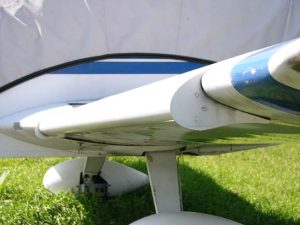
Leading edge cuffs are commonly found on airplanes. Also known as drooped leading edges (DLEs), it’s an adjustable surface on the leading edge of an airplane’s wing. It’s a form airfoil modification. Leading edge cuffs modify an airplane’s wings by enhancing them with adjustable surfaces. Here are five fun facts about leading edge cuffs.
#1) Improves Stall and Spin Resistance
Leading edge cuffs improve stall and spin resistance. Airplanes can stall and spin. Stalling is a phenomenon that involves an insufficient amount of lift. When an airplane stalls, it won’t produce enough lift to keep it in the air. Spinning, conversely, is exactly what it sounds like: It involves an airplane rotating or spinning in a corkscrew-like motion. Airplanes that feature leading edge cuffs are better protected against stalling and spinning than those without leading edge cuffs.
#2) Factory Installed and Aftermarket
There are factory-installed leading edge cuffs, and there are aftermarket leading edge cuffs. Factory-installed leading edge cuffs are installed by the same aerospace companies that produce and manufacture airplanes. Aftermarket leading edge cuffs are installed by other businesses or even private pilots.
#3) Pioneered By NASA
Leading edge cuffs were originally pioneered by the National Aeronautics and Space Administration (NASA). They were part of NASA’s research program on stalls and spins. In the mid-1970s, NASA launched a program to investigate ways to prevent airplanes from stalling and spinning. This ultimately led to the discovery of leading edge cuffs. A study conducted by NASA found that only 5 percent of airplanes with leading edge cuffs entered spins when prompted, compared to 59% to 98% of airplanes without leading edge cuffs.
#4) Creates Shorter Landing Distances
While the primary benefit of leading edge cuffs is improved resistance to stalls and spins, they offer other benefits as well. Leading edge cuffs, for instance, create shorter landing distances. With leading edge cuffs, pilots require less distance to land airplanes. They create shorter landing distances while simultaneously improving stall and spin resistance.
#5) Improved Aileron Control
Another secondary benefit of leading edge cuffs is improved aileron control. Ailerons are hinged surfaces on wings. While leading edge cuffs are found on the front of an airplane’s wings, ailerons are found on the rear of an airplane’s wings. Ailerons are designed to help airplanes “roll” to the left and right. Many airplanes that feature ailerons will also feature leading edge cuffs. This is because leading edge cuffs improve aileron control.



